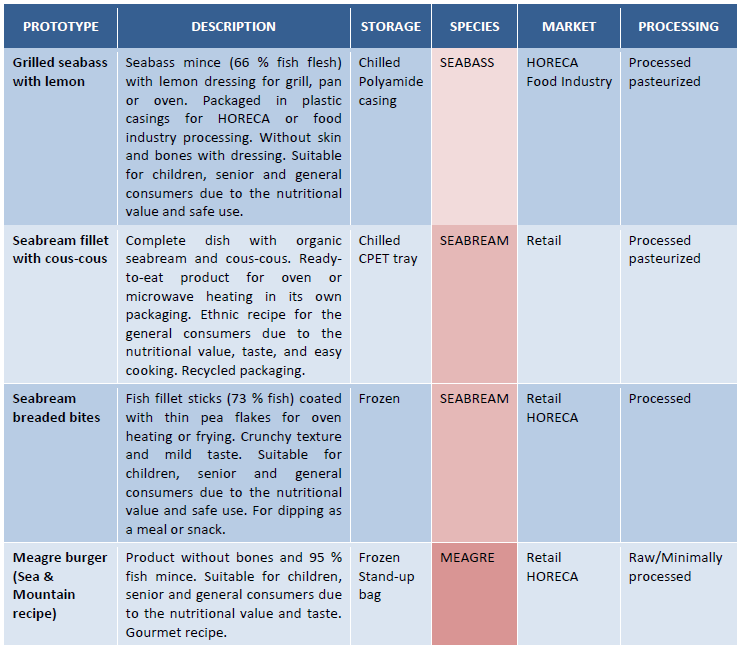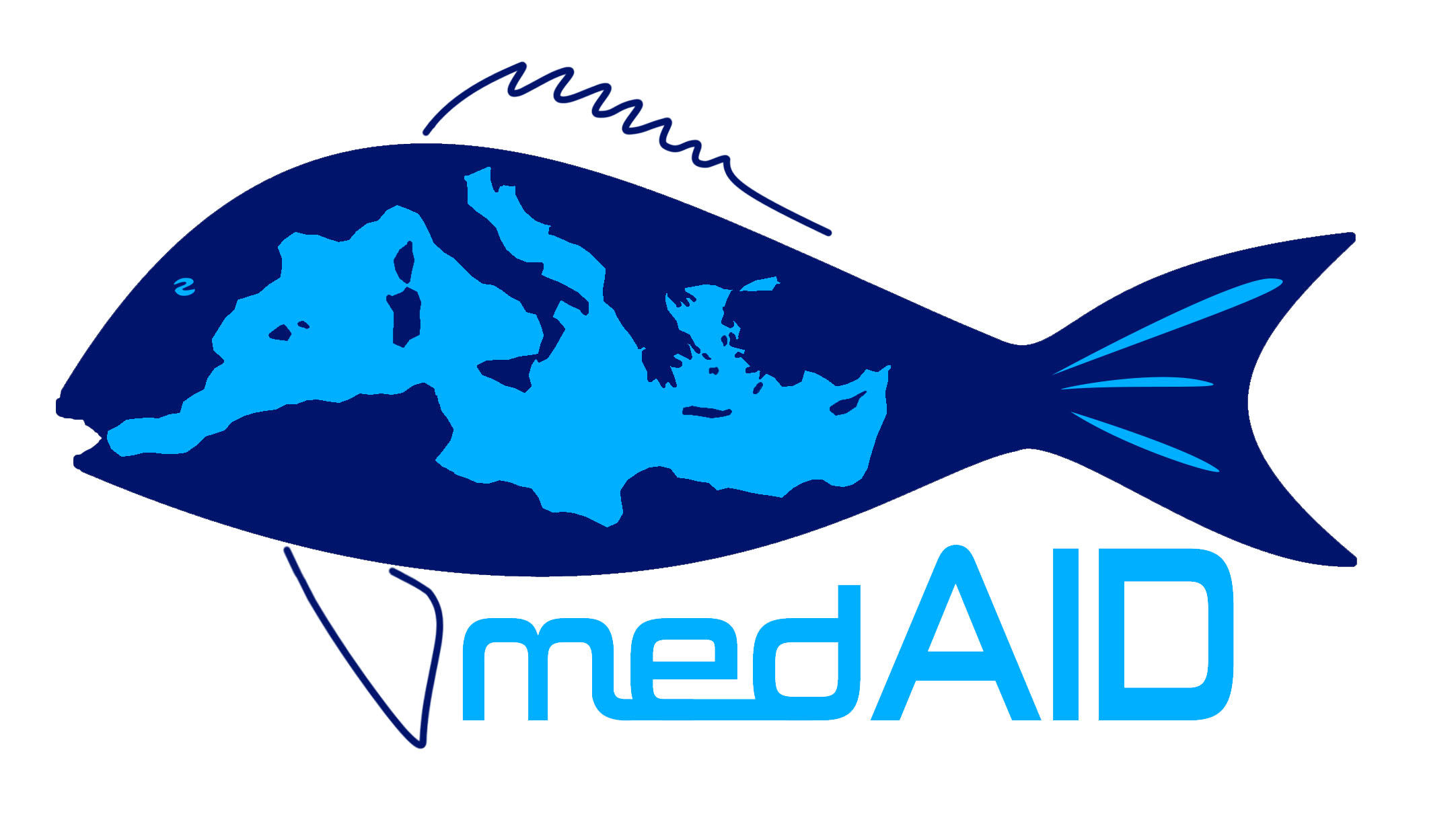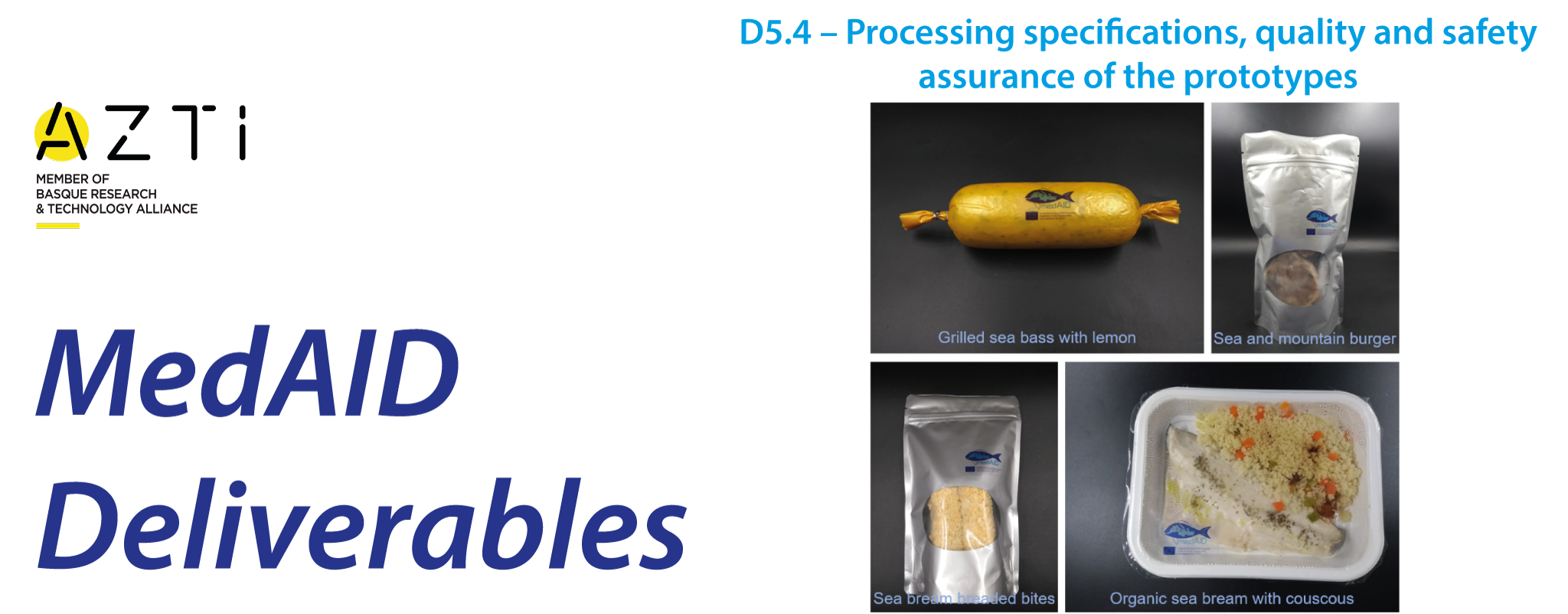Innovation and development of new products for exisiting and new markets is clearly needed for a long-term competitive supply-demand equilibrium of Mediterranean marine aquaculture. As in the rest of the food industry, the improvement of the competitiveness and sustainability of the sector is governed by current consumer trends, which translates into the need to transform aquaculture species to offer consumers the safe, quality and convenience products they demand.
MedAID’s WP5 aims to explore and validate the technical and market feasibility of developing different product alternatives of main Mediterranean aquaculture marine fish, by identifying the best market solutions, transforming fish into new value-added and tailor-made products to satisfy the needs of different consumer profiles (children, senior, gourmet/premium, ethnic etc.), while adapting to the needs of diverse food and fish market channels.
The aim of the work developed in Task 5.3.4. ”Food fish prototypes pre-scale-up needed for market validation”, and reported in this report (Deliverable 5.4) was to determine the optimum production process for product technical quality and safety and to elaborate the food prototypes needed for market validation with consumers in Spain, France and Germany (Task 5.4.1.). Four prototypes out of the eight new products previously designed in the Task 5.3 (Deliverable 5.3. ”Development of new added value fish prototypes at pilot-scale for different fish market channels” [Peral et al., 2020]), were selected for optimization and production at pre-industrial scale at AZTI´s plant through short production runs, followed by a market validation step so as to study the sensory acceptability, consumer preferences, food packaging and purchase intention among other parameters.
In the four selected products (Grilled seabass with lemon, Organic seabream fillet with cous-cous, Sea&Mountain meagre burger and Seabream breaded bites) the three main Mediterranean aquaculture fish species were included as raw materials and the different levels of processing and market and consumer niches were considered (Table 1). The work performed in this task included the optimization of production process and the assurance of product technical quality and safety.
The four selected products were elaborated, packed and stored in optimal conditions until delivery to consumers for their testing, fulfilling safety and quality regulations, and a technical dossier for each product was generated. A nutritional labelling system ”Nutri-Score” for each product was suggested according to the nutritional profile and ingredients. Two of the products were labeled as dark green ”A” and the other two as light green ”B”, which makes the developed seafood products a healthy choice for consumers.
Protein content along with a high content in omega-3 fatty acids, unsaturated fats and monounsaturated fats was evaluated for the inclusion of the possible nutritional and health claims for each product. The fatty acids profile of feed composition in farming affects positively in this case the nutritional profile of farmed fish and resulting seafood products.
Product tasting sessions were initially planned to take place in three countries (Spain, France and Germany). However, due to the Covid-19 pandemic in 2020 and consequent restrictions, the product tasting sessions were implemented only in Spain in July 2020. Moreover, the testing was not performed in sensory analysis laboratories, but through a Home Use Test, reproducing a real experience at home with the products. For that, 80 consumers from two different geographical areas in Spain were selected to participate in this study: Bilbao (a coastal city in the north of Spain) and Zaragoza (an inland city in the north-west of Spain). The consumers liked very much the taste at home experience (7.86 out of 9 points). Slight differences were found between age and gender, the consumers being from 36 to 54 years old and the females most liked the experience.

The product validation with German and French consumers was performed by online studies in autumn 2020. Results from the at home use test with consumers in Spain, and those obtained from the studies developed with German and French consumers will be included in the next deliverable D5.5. “Market validation, technical and socioeconomic analysis of fish products”.
Finally, the work reported in this deliverable is expected to contribute to product and process development which is considered a key element of a smart business strategy to compete with other players in the food value chain.

